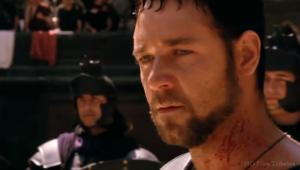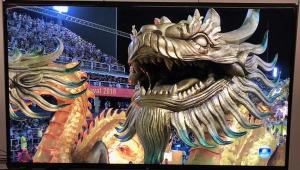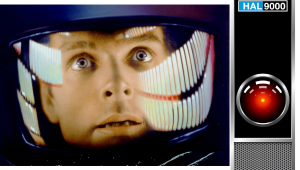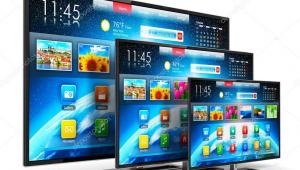TV Technology and Prices: Then and Now
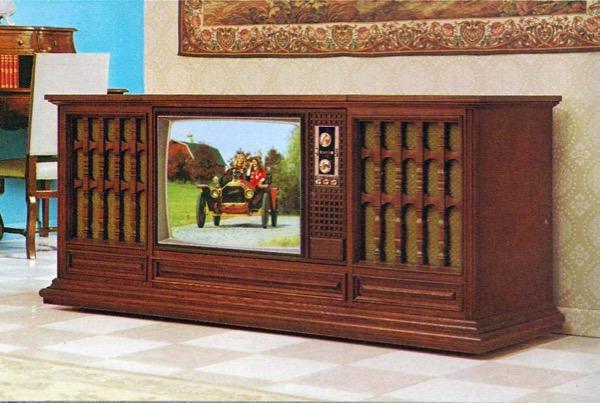
In the early 1970s a good, 21-inch console color television might cost you $500. In today's money that would be around $3300. A good tabletop set might be $350, or about $2200 today. Neither set would offer remote control, nor anything close to high definition and certainly not high dynamic range. Its limited user controls might include Color and Tint, which were invariably set wrong by either the manufacturer or the user, and horizontal and vertical tint controls to keep the picture from rolling or tearing. They were pure analog and designed around vacuum tubes. No one thought in terms of bits, nor even lines of resolution; there was no option beyond standard definition and only TV engineers knew what 480i meant. The picture was 4 x 3, and on the weekly Million Dollar Movie broadcast (how quaint, given the cost of making movies today!), a widescreen film would always be panned and scanned (it often still is, but some things never change). A letterbox was something your mail was delivered in. American manufacturers such as RCA, Zenith, Emerson, Sylvania, Motorola, Admiral, and Westinghouse dominated the market. It would be a few years before Sony became a household name, and only decades later would sets from Korea and China be commonplace.
There was little or no cable; you were lucky to have four or five TV channels to choose from. There was no Internet or Wi-Fi streaming. At midnight, or soon after, the national anthem played and all broadcasting ceased until early the next morning. Somehow people survived.
What we have today (aside from an obesity epidemic from too many hours spent channel surfing and YouTubing combined with binge snacking!) are major upgrades to the TV experience. Denizens of the 1970s would have been totally confused and overwhelmed by today's endless variety of programming. If sets in today's sizes were to suddenly be made available in 1970, viewers would have moved as far back from them as their then smaller rooms allowed to avoid eye strain from the bright, humongous picture. (Too many viewers actually do that today; but that's a subject for a different blog.)
But with all of the negatives in the "Vast Wasteland" TV was said to be at the time, the early 70s did offer some now classic programming. This included Mash, Mission Impossible (yes, folks MI started as a TV show, though Tom Cruise was still in diapers at the time), and The Carol Burnette Show. Dallas and The Bob Newhart Show both inspired dream sequences, one of them infamous, the other, years later, generated the most iconic final episode scene in TV history. The original Star Trek and The Twilight Zone had both wrapped by 1970 and (as they used to say) left the "airwaves." But they were destined for endless repeats, inspiring similar future shows. Most of them, and the originals, are still popular in syndication today.
So are today's sets really better than what was available then? Yes, but at a cost, though not an immediate financial one. In the past, folks kept their TVs much longer, sometimes even for decades or at least until color became more affordable. For most buyers, slightly larger screens weren't dramatic enough reasons to make an immediate change. Remote controls and push-button tuners were nice to have, but hardly reasons to chuck Old Betsy to the curb (besides, Old Betsy weighed a ton!). And while screens got larger, we were still limited to 32-inches in direct view CRT until the bottom fell out for such designs, challenged first by rear projection sets the size of refrigerators and, eventually, by today's flat screens.
Another reason folks held onto their CRT sets was durability. They were solidly built, and if they broke it was almost certainly a bad tube. While there were TV repairmen who would come to your home (seen one of them lately, or a doctor who makes house calls?) a quick trip to the local drug store's tube tester often made for a cheap and easy fix as long as you didn't electrocute yourself poking around inside the set.
Today's big screen TVs are generally well made, but consumers now itch for a new set much sooner, generally in little more than 5 years and even less for those who must have the latest and the greatest. Technology is moving far faster than beforefrom SD to full acceptance of HD in less than 10 years, then to 3D (R.I.P.), even shorter to 4K, then to 4K with high dynamic range, and now (help me, Rhonda!) 8K. The now dominant short replacement turnaround is simply too valuable for set makers to stand still. But there's a plus for the consumer in this as well. The more sets sold, the more savings there are from economies of scale, which profits both the set maker and buyer. But the downside is that you have to replace your TV more often to keep the ball rolling!
Another reason for today's fast replacement turnaround is that there is simply more that can go wrong in complex flat screen sets, even though serious problems are comparatively rare. I recently had an analogous experience with my car, a 14-year old Mazda. The car's air conditioner went out (repairing the AC in your car is something you don't put off in August in Florida) and the service department had to pull out and then re-assemble much of the dash to fix it. The bill was roughly equivalent to the cost of a new, good (but not flagship-good), 65-inch TV. They had my car for a week, and I was loaned a new Mazda 3 for the duration (well, 2018 new at least). I was impressed by the new bells and whistles in the loaner, but couldn't help but think that this meant more that could go wronga boon for car service shops everywhere.
There are no tubes to be replaced in a modern TV, and no possibility of a DIY repair. And how many TV service shops are in your home town? I suspect that big box stores like Best Buy can do repairs, but may have to ship the set off to some sort of central repair facility, as they do with computers. And good luck if it's out of warrantee. Just getting a 65-inch TV to the shop can also be a hassle. (Hint: When you buy a new TV, don't throw away the shipping box!).
Interestingly, projectors are different. Their most likely failure is the projection lamp, an easy though not cheap DIY replacement. And if you do have to ship them off, or carry them to a repair shop, they're much easier to handle than a big TV. But while a good projector can make for a spectacular movie night on a big screen, it's rarely ideal for day-to-day viewing.
That 1970 console TV, lasting for 10 years, cost $330/year in today's money. Today's $3300 flat screen set, used for 5 years, will cost $660 a year since few TV buyers will keep that new set for a decade. If it survives the viewing wars when a new set beckons, however, it might be retired with honors to secondary duty in a den or bedroom. And today you can easily find a 65-inch set for $1500 or less, or $300/year if used for 5 years. Even that cheaper set offers far more in performance and features today than that 1970s CRT console ever could.






